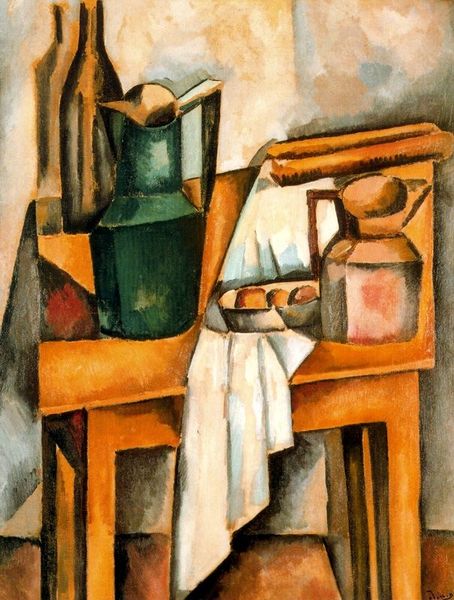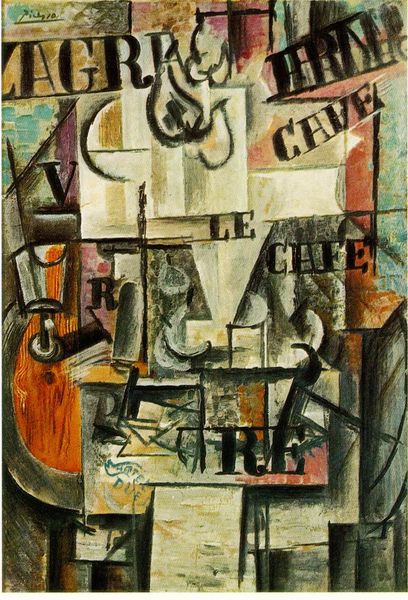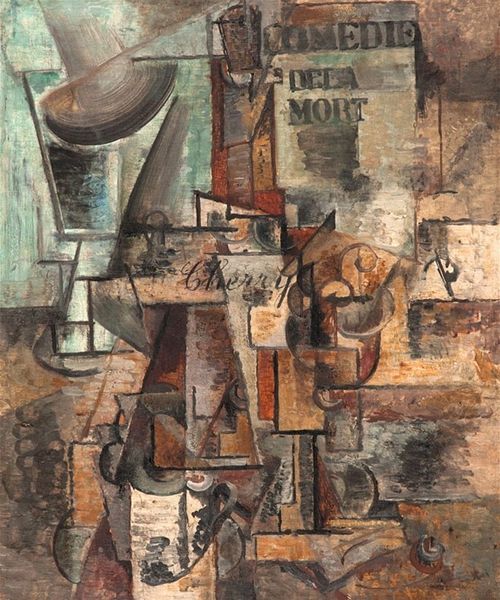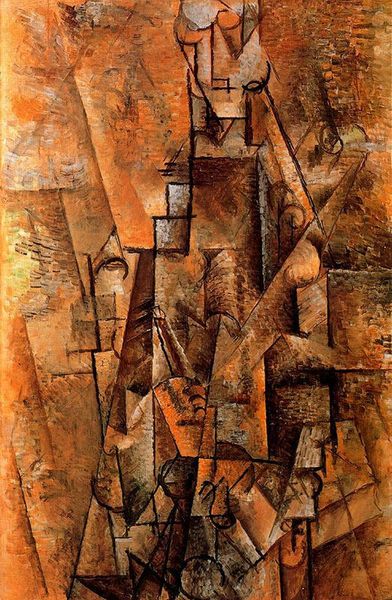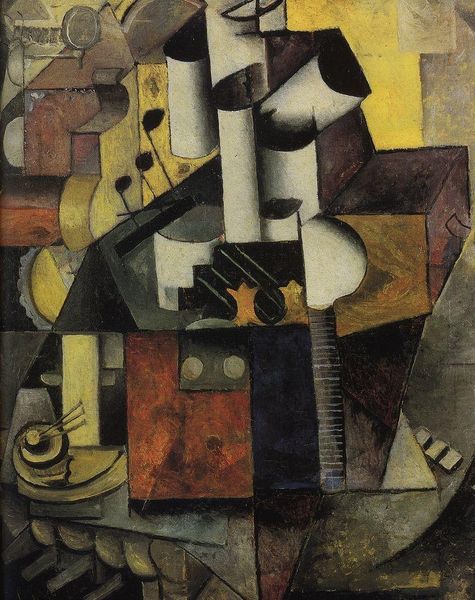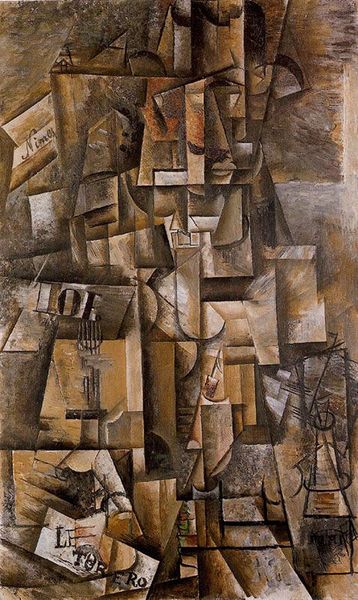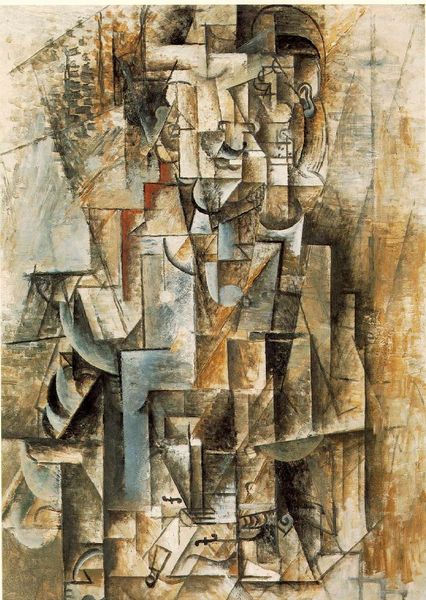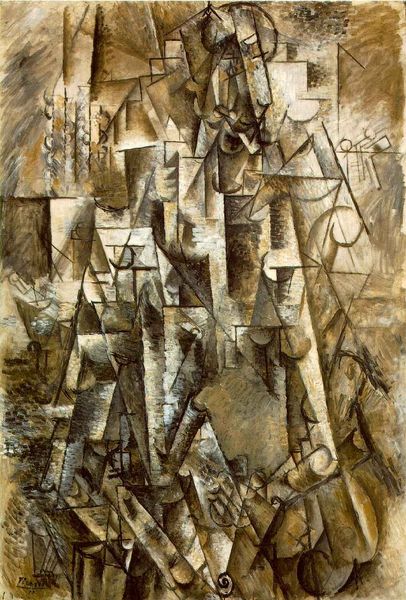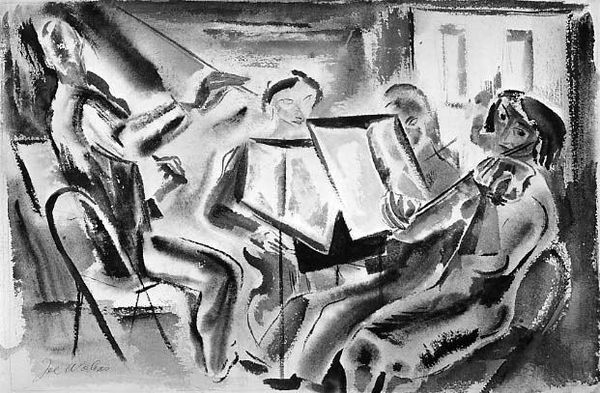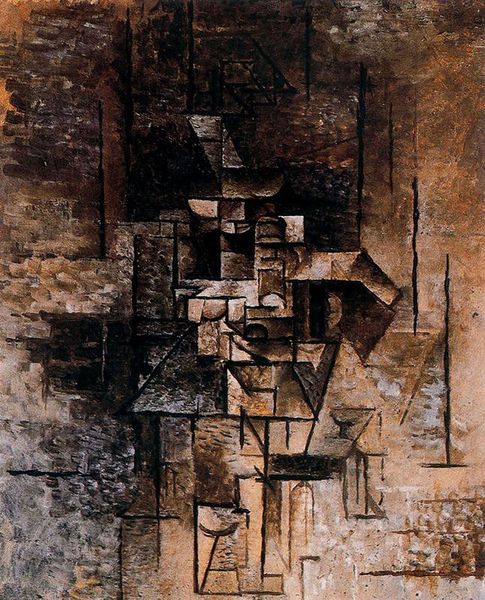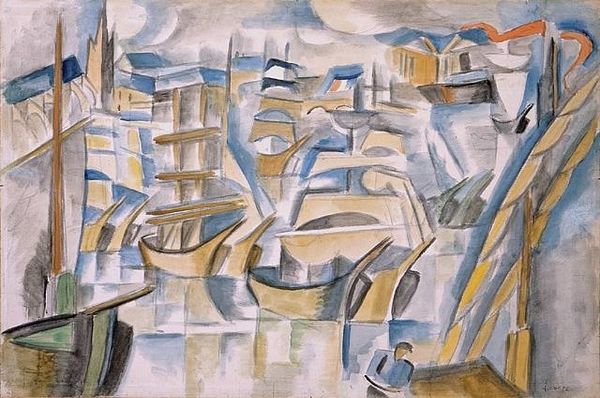
oil-paint
#
cubism
#
oil-paint
#
oil painting
#
geometric-abstraction
#
modernism
Copyright: Public domain US
Curator: Welcome. Before us, we have Pablo Picasso's "Still life on the piano ('CORT')", a painting dating from 1911. Editor: Oh, my, talk about visual dissonance! It's like someone took a perfectly good piano and smashed it into a million little beige and brown shards. And yet... there’s a curious harmony. It’s the anti-sonata, perhaps. Curator: Exactly. This painting is exemplary of Picasso's Analytical Cubism. You see how objects are fragmented and reassembled on the canvas from multiple perspectives? It rejects traditional representation and seeks to capture the essence of the subject, more than its mere appearance. The bold 'CORT' hints at the manufacturer of the piano itself and integrates textual elements into the painting, a distinct feature of cubism. Editor: So it’s not about the actual piano; it’s about deconstructing our idea of what a piano IS? Sort of philosophically smashing the Steinway. And it’s brown...very, very brown. Curator: Well, that monochromatic palette, primarily browns and ochres, is deliberate. It directs the viewer’s attention towards the forms and structures rather than being distracted by color. You notice he incorporates elements that denote sound as well: that faint suggestion of musical bars up top... It makes a conceptual sound to me. Editor: The longer I look, the more melodies I almost hear – not quite coherent, like echoes in an empty concert hall. There's a ghostliness to it, isn't there? Like trying to remember a song you loved but can only grasp fragments. Maybe, actually, that is the most complete expression of a melody. Curator: A common debate around early Cubism concerned the very act of artistic interpretation and viewer agency. If a work seems unfinished, it, in a sense, demands greater participation from us to interpret it. Is it fair to burden the art-viewer in such ways? Editor: Well, personally I embrace the challenge, particularly because its ambiguity almost creates a more resonant experience than outright visual statements. Curator: Indeed, a potent point. It reveals the enduring power of an artwork created in 1911 to generate very contemporary feelings today. Editor: It definitely gets one’s mental keys tinkling! Thanks for shedding a little harmonic light on this beautiful chaos.
Comments
No comments
Be the first to comment and join the conversation on the ultimate creative platform.
